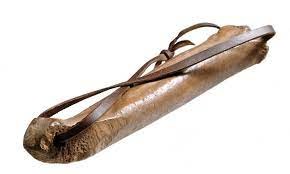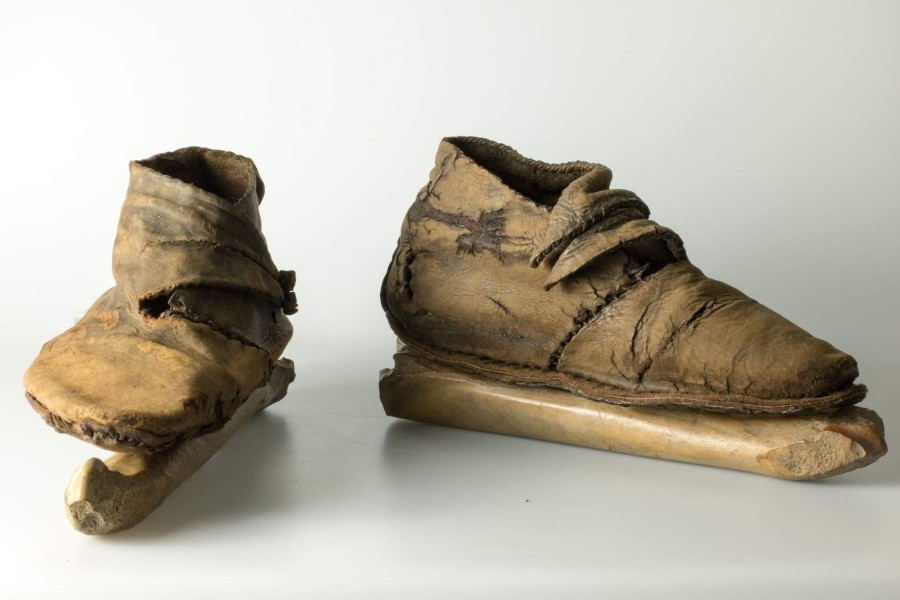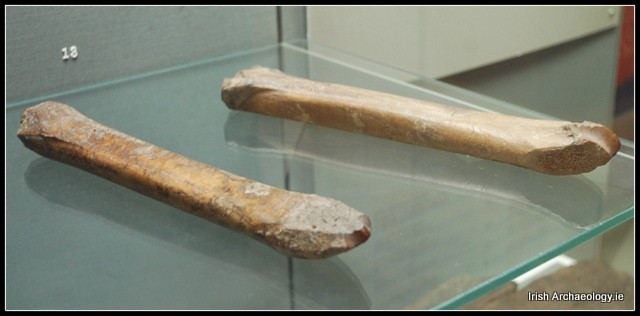Bone Ice Skates from Viking Age Dublin | Irish Archaeology

These unusual looking bone objects represent a pair of medieval ice skates. They date from circa 11th/12th century AD and were discovered during the National Museum of Ireland’s excavations in Viking Age Dublin[i].

Similar artefacts are known from early Scandinavian sites such as Birka and Hedeby, while in Britain over 40 have been found in York [ii]. The skates are typically fashioned out of cattle or horse metatarsal bones, whose surfaces have been roughly trimmed with a blade, to allow easy movement over snow and ice. Recent research by Federico Formenti suggests that bone skates were first used during the Bronze Age, most likely in southern Finland[iii] and they continued to be popular until the 15th century, when they were gradually replaced by iron skates. According to Formenti, “the oily external surface of the animal bones producing a natural wax which limits resistance to motion’, making them ideal for skates [iv].

Ice skating using poles and bone? skates (Historia de Gentibus Septentrionalibus, AD 1555)
One of the earliest written references to bone skates dates from the 12th century when London chronicler, William Fitzstephen, described children attaching bones to their ankles and ‘flying like birds across the ice’[v]. Other sources suggest that skates were typically attached to the feet via leather tongs, with the wearer propelling themselves along with wooden poles, much like in skiing (see image above).

The presence of skates in an Irish context suggests that winters may have been colder during the Viking Age and the Irish Annals do contain many instances of heavy snowfall during this period, for example, in the winters of AD 815, 1007, 1047, 1093, 1115 and 1156[vi]. Indeed, in the year AD 1338 the extreme cold was such that River Liffey froze over, ‘and men dance played at ball, and ran races and roasted herrings on fires made of wood and turf and the river'[vii]. I wonder did some people also glide across the frozen expanse on bone skates?
[i] One of the bone ice skates comes from Fishamble Street, the other from High Street.
[ii] Kyriacou, K. Mee, F. & Rogers, N. (2004) Treasures of York, p. 76, Landmark Publishing, Derbyshire
[iii] Stefan Lovgren, National Geographic News, January 4 (2008) http://news.nationalgeographic.com/news/2008/01/080104-first-skates.html
[iv] ibid
[v] Annals of the Four Masters
[vii] Descriptio Nobilissimi Civitatis Londiniae
[vii] Annales Hibernie ab Anno Christi 1162 ad annum 1370
Related Post
A shocking documentary proves that mermaids do exist
SHOCKING Revelation: Thuya, Mother of Queen Tiye, Was the Grandmother of Akhenaten and Tutankhamun—What Ancient Egyptian Secrets Did She Leave Behind?
Breaking News: Astonishing Discoveries at Karahan Tepe Confirm an Extraterrestrial Civilization is Hiding on Earth, and NO ONE Knows!
Breaking News: Researchers FINALLY Discover U.S. Navy Flight 19 After 75 Years Lost in the Bermuda Triangle!
NASA’s Secret Investigation: Uncovering the Astonishing Mystery of the UFO Crash on the Mountain!
Explosive UFO Docs LEAKED: Startling Proof That Aliens Ruled Ancient Egypt!